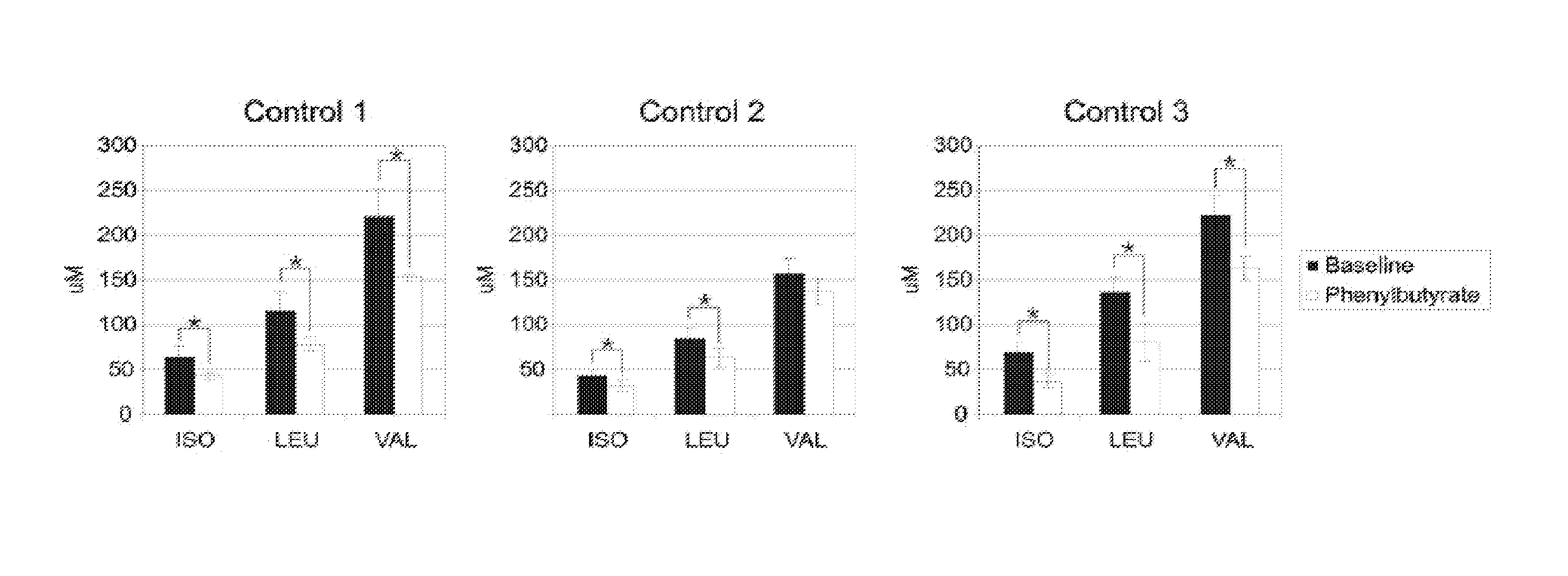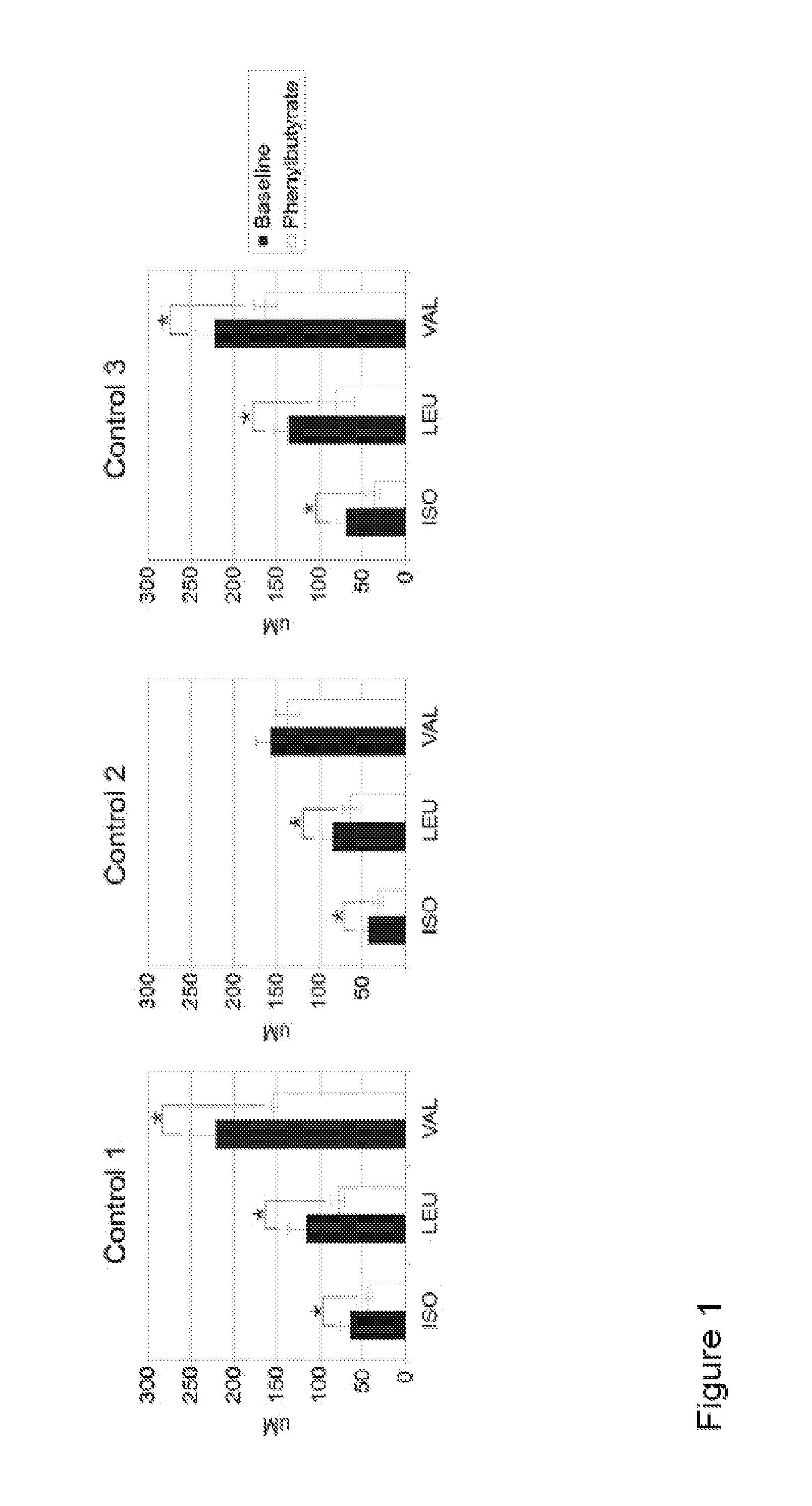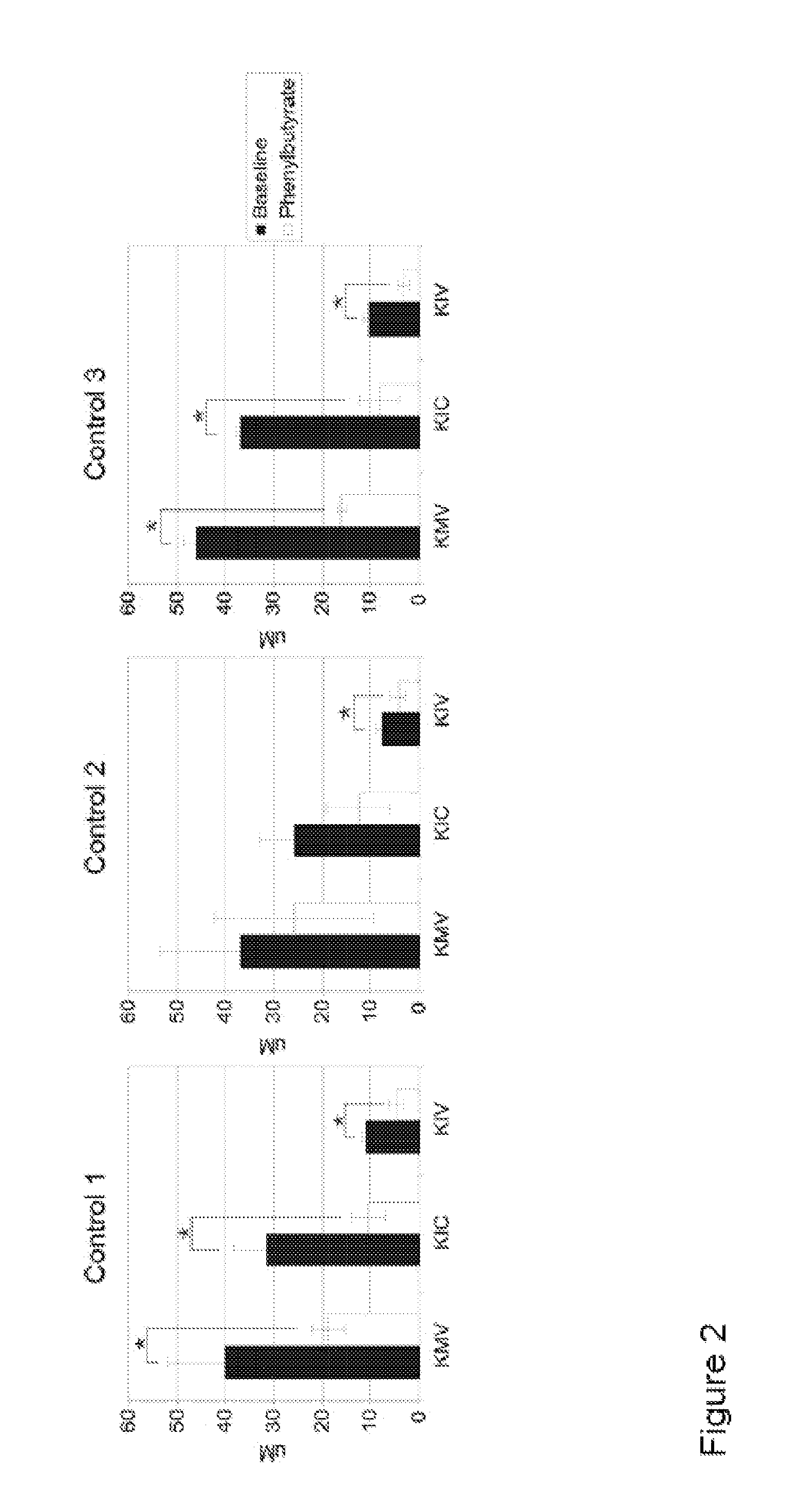Methods of modulation of branched chain acids and uses thereof
a technology modulation methods, which is applied in the field of modulation methods can solve the problems of inborn error in leucine metabolism of individuals, and achieve the effects of decreasing the phosphorylation of the subunit, decreasing the blood plasma level of branched chain amino acids, and decreasing the phosphorylation of subunits
- Summary
- Abstract
- Description
- Claims
- Application Information
AI Technical Summary
Benefits of technology
Problems solved by technology
Method used
Image
Examples
example 1
Clinical Protocol
[0122]The clinical protocol was approved by the Human Subjects Institutional Review Board of the Baylor College of Medicine. The healthy control subjects and the MSUD patients were admitted into the Texas Children's Hospital General Clinical Research Center and were started on the study protocol after an informed consent was obtained. Each subject or a parent for those younger than 18 years gave written informed consent for participation in the study. Both the healthy controls (N=3) and the MSUD patients (N=5) were admitted twice in the clinical research center for 3 days each. For both admissions, the subjects received a constant protein intake of 0.6 grams / kg / day as a combination of BCAA-free formula and whole protein. On day three of admission, the patient had blood sampling at 0, 4, 6, and 8 hours during a period of frequent every two hour feeds in which ⅛th of the day's protein subscription was given. On the second admission, each subject was given sodium pheny...
example 2
Measurement of BCKDC Expression and Activity in Patients with Intermediate and Late Onset of MSUD
[0125]Five patients with intermediate and / or late onset forms of MSUD were recruited for a trial with phenylbutyrate. Patients with the intermediate form have some degree of residual enzyme activity, and, therefore, were hypothesized to have higher likelihood to respond to the treatment as compared to patients with the classic form who have no residual activity. Diagnosis of the intermediate form was made based on clinical onset of clinical symptoms beyond the neonatal period. The diagnosis of MSUD was confirmed biochemically based on the elevated leucine and on the presence of alloisoleucine in plasma. Enzyme assay and DNA analysis for BCKDC activity and genotype, respectively, on these subjects were performed and summarized (Table 3). BCKDC enzyme activity was measured on skin fibroblasts obtained from all five patients using radioactive method previously described. In this method, cul...
example 3
PBA Treatment Specifically Increased BCKDC Activity
[0128]Table 4 shows the effects of Phenylbutyrate on Control and MSUD fibroblast cells. To confirm that the effect of the phenylbutyrate was specific for BCKD activity, the enzyme activity was measured in control and MSUD patient fibroblasts before and after incubation with phenylbutyrate at the concentration of 2 mM from two independent patients (one clinical responder and one clinical nonresponder) and in one control. The control fibroblast cell line showed a 1.7 fold increase in enzyme activity after incubation with phenylbutyrate. A similar increase (1.7 fold) over baseline activity was also observed in one MSUD cell line (patient 5), consistent with the biochemical response for BCAA and α-ketoacids in that patient. However, fibroblasts from Patient 3 did not show an increase of enzyme activity over baseline levels.
[0129]
TABLE 4Phenylbutyrate−+Normal control 100%176.08%Patient 3 (CR) - non0.59% 0.52%responder clinicallyPatient 5...
PUM
| Property | Measurement | Unit |
|---|---|---|
| time | aaaaa | aaaaa |
| concentration | aaaaa | aaaaa |
| concentration | aaaaa | aaaaa |
Abstract
Description
Claims
Application Information
 Login to View More
Login to View More - R&D
- Intellectual Property
- Life Sciences
- Materials
- Tech Scout
- Unparalleled Data Quality
- Higher Quality Content
- 60% Fewer Hallucinations
Browse by: Latest US Patents, China's latest patents, Technical Efficacy Thesaurus, Application Domain, Technology Topic, Popular Technical Reports.
© 2025 PatSnap. All rights reserved.Legal|Privacy policy|Modern Slavery Act Transparency Statement|Sitemap|About US| Contact US: help@patsnap.com



